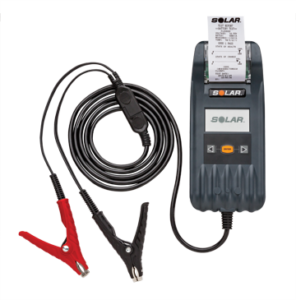This month, we are starting a new series we call DEEP DIVE, where we address a specific aspect of a product and how it is used in real world applications. We will choose the topics based on what we are being asked through our various communications channels (phone, email, social, etc.). In this first edition, we are going to tackle the question of how battery state of charge (SoC) impacts testing and how the different testing methodologies handle state of charge issues differently.
First, what do we mean by state of charge? This refers to how fully charged a given battery is, on a scale from 0% (stone cold dead) to 100% (fully charged). Primarily, this value is driven by the Open Circuit Voltage (OCV) of the battery, where ~12.8V typically is equivalent to a fully charged 12V (nominal) vehicle starting battery.
So, how could the state of charge impact a battery test? Depending on the test method used, the answer is, SoC can have a dramatic impact on testing accuracy. For the purpose of this article, we’ll focus on two testing methods: Invasive Load Testing and Digital Testing. Invasive Load Testing refers to testing methods and equipment that place a specific load on the battery for a specific period of time. Examples of invasive load testers include fixed load testers (the proverbial cheese grater, such as our Model 1852) and variable load testers (carbon pile testers, such as our Model 1876). Digital Testing refers to electronic testers that may or may not place a load on the battery (hint: SOLAR BA series testers do) and send an electronic signal through the battery as a means to determine battery health (a good example is our Model BA327).
There are many things that make invasive load testing and digital testing different, but a key differentiator is how they manage discharged batteries. With an invasive load tester, it is critical that the battery to be tested is at or above 85% state of charge (SoC). Attempting to test a battery below this state of charge will result in an inaccurate test and unreliable results (you are likely to get a failed test, even if the battery is actually in good health). In such a situation, it is important to first charge the battery and then perform the test.

We hope this helps to clear up some of the most common questions we receive related to battery testing and state of charge. Battery testing can be tricky at times and there’s always that one battery that seems to fool every testing method, but having a good handle on how SoC impacts your testing results, depending on the testing method used, will go a long way toward ensuring you achieve consistently accurate results.






